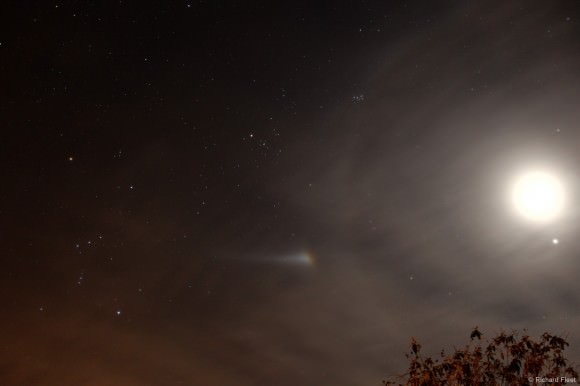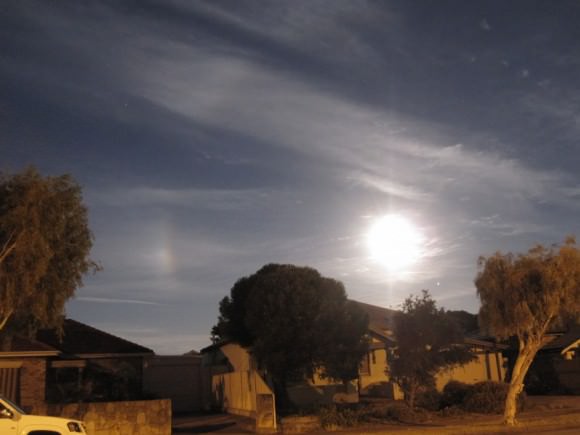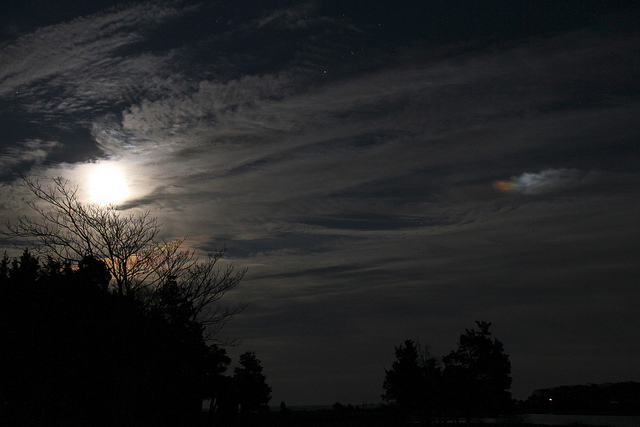[/caption]
You’ve probably heard of — and likely have even seen — a Sundog, the atmospheric phenomenon that creates rainbow-colored blobs or arcs of light on either side of the Sun. But did you know the Moon can have ‘dogs’ too? Also known as mock moons, false moons, or the scientific name of paraselenae, Moondogs aren’t seen as often as Sundogs. However, the conditions needed to create either of the ‘dogs’ are about the same. This great image of a Moondog, above, by Jeff Schultz is a perfect example of the kind of night you might see this gorgeous phenomenon.
What are the secrets to how Moondogs are produced?

Moondogs are seen most often in the winter when ice crystals may be present in the atmosphere. But they can appear anytime of the year when hexagon-shaped ice crystals might be high in the sky, or also when thin cirrus or cirrostratus clouds are just right. What happens is that the ice crystals or clouds refract the moonlight, creating blobs or arcs of light to the left and right of the Moon, or sometimes just on one side.
Also, the Moon usually needs to be full or nearly full, along with being low in the sky for the effect to be produced. The angular separation of the light blobs from the Moon is usually 22 degrees.
Sometimes, a full halo of light around the Moon will also appear in conjunction with the Moondogs; other times smaller arcs of light will be part of the effect, but often Moondogs appear without any other effects.
Moondogs can appear colorful like a Sundog or ‘shine’ with a light similar to the Moon.

Moondogs are seen in both hemispheres, as this image from Ian Musgrave in Australia attests, but it seems that the effect is seen most often the farther north you are in the northern hemisphere and the farther south you are in the southern hemisphere.
You never know exactly when you might be lucky enough to see a Moondog, so we recommend looking at the Moon every night! Also, don’t forget to wink at the Moon, too.
For more detailed information and images of Moondogs, Sundogs and other optical effects, Richard Fleet (the photographer who captured the second image in this article) has a great website: “Glows, Bows and Haloes.”

